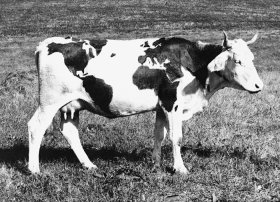(notes on readings in blog research pages. research)
I love to visit the British Library, and wander through the changing permanent collection, which displays manuscripts and maps. There has been a recent major exhibition there, Magnificent Maps. Power, Propaganda and Art. 2010.
 |
| Gold Coast Map 1923. The British Library |
The earlier exhibition, Lie of the Land, was magnificent and memorable. In fact, I have met other people over the years who remember it fondly. I wonder whether the impact of the first was more to do with the convincing revelation that maps portray ideas more than land, statements of power and intent rather than even fact, whereas by the recent exhibition these ideas were more familiar to me. However, the Lie of the Land had much more content and was generously displayed, whereas Magnificent Maps seemed more spare, with works hung higher and more remotely. Another example perhaps of how hanging decisions can help or hinder the overall message of an exhibition.
So I have been considering how the map itself can form an image. Although often used as satire, which does not interest me so much, I like the layering of meaning and creating ideas which may function as maps but are really something else.
I recently met and spent the day with artist Margaret Proudfoot at the Koestler Trust, my case study subject, during a judging and assessing day. In 2009 she was part of an exhibition at England & Co Gallery, London, The Map is not the Territory.
| Margaret Proudfoot. Map. year unknown |
http://t3.gstatic.com/images?q=tbn:ANd9GcRzxie5l4H7VgvJStuny2S2Ni6neUwABEn0FAY3iQjZ-TJE2hVf&t=1 (accessed 24th June 2011)
Other images from England & Co. The Map is Not the Territory:
 |
| Grayson Perry. Map of an Englishman. 2004 |
http://www.artificialgallery.co.uk/shared/assets/ART001/5779/MapofanEnglishman.jpg
 |
| Damian LeBas: Quebec and New Foundland (detail), 2006 |
 |
| Peter Greenaway: A Walk Through H: Cross Route, 1976-78 |
 |
| Jugoslav Vlahovic: World Cow, 1974 (edition 2002) |
http://www.englandgallery.com/images/r280_Vlahovic.jpg (accessed 24th June 2010)
Perhaps it was the way I explained this current MA mapping project to her, but Margaret Proudfoot did tend to agree with me about the difficulties of producing an artists map while having the starting point and the end point already prescribed. How I would have preferred this project to be something slightly different - perhaps to simply make a map and the see what we all come up with - to add to the ongoing tradition of artists maps and different ways of recontextualising maps. I can see they are all useful media for exploring and demonstrating concepts. One does not have to google far to find interesting examples in positive and negative space:
 | ||
| Karen O'Leary. New York map. 2009 |
And in fact, I remember seeing maps in many exhibitions, some now difficult to locate and reference. As I write, I notice on a shelf this book:
Mapping is all around, a paradigm of thinking and visualising. If the project is Mapping the Territory, I would tend to agree with England & Co that Mapping is not the Territory. Again, I come back to the approach that mapping is about how you map, how you view and portray rather than what. The subject rather than the object. The method rather than the result. The verb rather than the noun.
Novak and Canas talk about becoming committed to our way of thinking in The Theory Underlying Concept Maps and How to Construct and Use Them (notes and reference : research). In some ways, some very different ways, this is the point I would like to lead to in my own art work in general. I believe that if you become aware of the way you are thinking, the fact you are thinking in a particular way, and conclude that there may be other, more beneficial, wonderful or deepening ways to think, it can be a revelation leading to more and better. More and better of whatever you choose.
It is not always easy to make more than incremental changes in thinking, seemingly unnoticeable and tiny alterations that add up in time. Similarly, I have been unable to unmarry my thinking about mapping, and to take on another's concept - the MA brief. According to my own thinking and understanding I have written myself a version of the question, and answered that. My solution reflects a scattered understanding, but is now answering its own questions.
24th June 2011

No comments:
Post a Comment